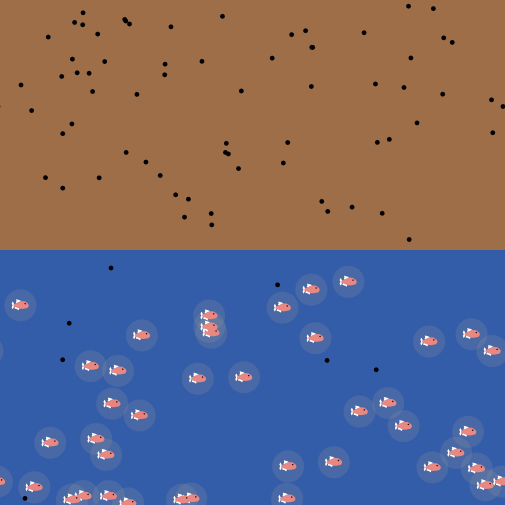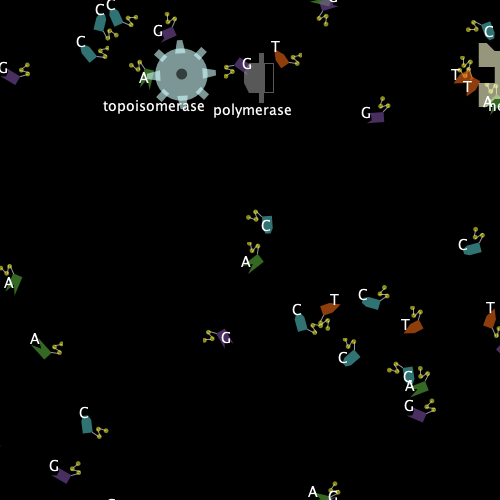tie
tie is a link primitive that "ties" two turtles at the ends of the link together, almost like the two turtles were attached with a rigid stick. If the link is directed, then the to turtle follows the from turtle, but not the other way around. If the link is undirected, then both turtles will try to mimic the movements of the other, which can often become chaotic. A tied turtle will not only follow the movement of the other, but will also pivot around the rotating turtle when it turns and copy its new heading.
Because tie is a link primitive, it needs to be executed within a link context, such as ask links [tie] or, more commonly, create-links-to turtles [tie]. Note that since the tie is applied to the link, when the link is destroyed or either of the turtles at the ends of the link dies, the tie is destroyed as well.
In the model example below, we use tie to model the symbiotic relationship between whales and whale barnacles. In this relationship, the whale barnacles attach themselves to whales as they swim around. Since these barnacles passively filter food from the ocean water, it is highly beneficial for them to hitch a ride with these fast moving whales as they travel through the ocean. To model this attachment, we use tie along with a directed link to make the barnacles, once attached, follow the whale's movement.
Try it Yourself
What's next?
Once you mastered the tie primitive, don't stop there. Check out the resources below to improve your NetLogo skills.
Published NetLogo models that use the tie primitive:
Similar primitives:
create-links-with
Creates links with every agent in an agentset.
link-neighbors
Reports all agents connected to a turtle with links.
layout-circle
Places turtles in a circle circle around the center of the world.



